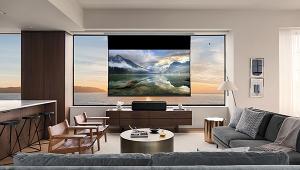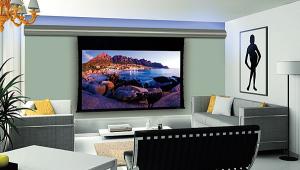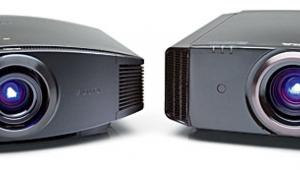How To Choose a Video Projection Screen Page 2
There’s a Website that offers a handy tool you can use to calculate your viewing angle from the seating distance and screen size: myhometheater.homestead.com/viewingdistancecalculator.html. From this site, I derived the following rule of thumb: A distance of 1.86 times the screen width will produce a viewing angle of 30 degrees; a distance of 1.36 times the screen width results in 40 degrees.
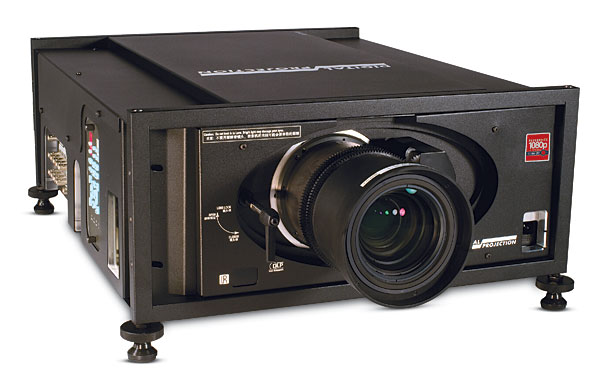
Also keep in mind that as the screen gets larger, the image will dim in nearly direct proportion to the increase in screen area, all else being equal. Projection lamps dim with age, often by as much as 30 percent in the first few hundred hours. So your best bet is to not overscreen. That is, be conservative in the size screen you choose, particularly if, like me, you prefer brightness levels at or a bit higher than the 14-foot-lambert minimum CEA/CEDIA specification.
Screen Gain
The brightness of the projected image depends not only on the projector and the size of the screen, but also on screen gain. Say what? A screen is a passive device. How can it have gain? It doesn’t, really. Higher-gain screens reflect more of the light incident on them toward the center of the viewing area, producing a dimmer image off to the sides. A screen with equal reflectivity in all directions, by definition, is said to have a gain of 1.0. A higher-gain screen sacrifices reflectivity to the sides for greater brightness in the center.
While some videophiles swear by high-gain screens, particularly those who demand a really big picture, our recommendation is to keep the gain between 0.9 (yes, there are screens with gains less than 1.0) and 1.3. The lower end of this range should offer satisfying brightness with most modern projectors at screen widths of up to 8 feet wide (gain 0.9 to 1.1). If you go larger or like a brighter (but not overbearing) image, you might consider a gain of 1.3.
But we’re talking about 2D here. 3D projection is dimmer, which means that other considerations come into play. Judging from the relatively affordable 3D projectors we’ve seen so far, you’ll want a gain of at least 1.3 and a screen no more than 7 to 8 feet wide. Go much larger than that, and you’ll need an even higher-gain screen. But be aware that the higher the gain, the higher the likelihood of hotspotting and other performance issues.
While the early home 3D projectors we’ve seen use active glasses, future models that employ less expensive passive glasses might well make it to market. If that happens, you’ll need a special silvered screen that cannot (at present) be either perforated or retracted. And this screen will compromise 2D performance, so video purists will need a standard retractable screen positioned in front of the fixed silvered screen. Because of that impractical scenario, we currently recommend against home 3D projectors that use passive glasses.
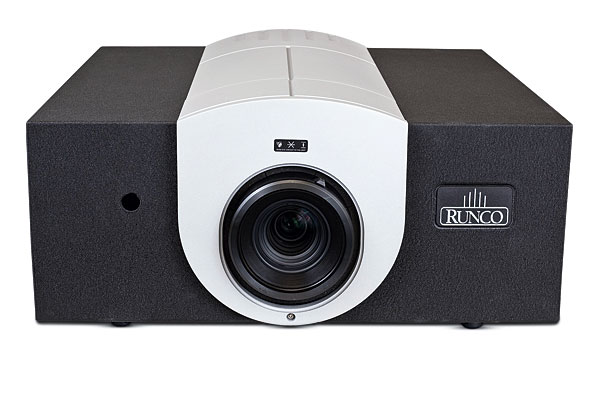
To Perf or Not to Perf
Some screens are more or less acoustically transparent. They use either a woven material or a material with scores of tiny microperforations. You can position your center-channel speaker (or all of your front speakers) behind them. While it’s certainly an advantage for dialogue to come directly from the center of the picture, such screens involve significant video compromises. Some light will pass through them, so they lose brightness. They can also affect resolution, and interaction of the perforations with the pixels in the image may even produce moiré patterns. If you insist on an acoustically transparent screen, we strongly advise that you deal with a trusted custom installer who has experience dealing with these issues.
Wrapping It Up
Our recommendation if you’re just starting out is to choose your screen size based on the desired viewing angle, your room, and the characteristics of your chosen projector. A nonperforated, 1.3-gain, 16:9 screen no more than 9 feet wide will be your safest choice. You can even go a little smaller if you anticipate using an affordable 3D projector. If the screen is retractable and you plan to mount it on the ceiling rather than the wall, make sure the drop (the black material above the screen) is sufficient to bring the screen down to your desired height.
It should be obvious that making the right decisions here will involve more variables than just choosing a projector. You may even need that custom installer to help install the screen. In any case, the choice of the right screen can go a long way in helping you get the most out of your big-screen experience.
